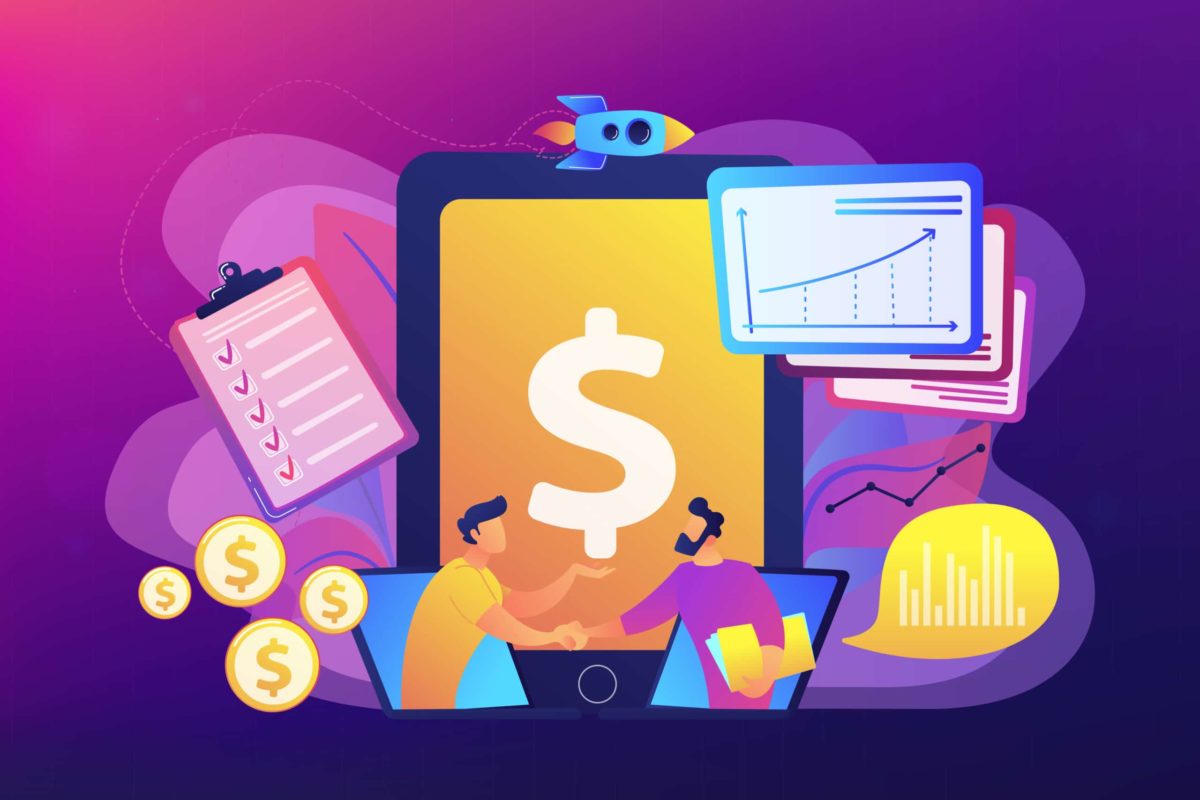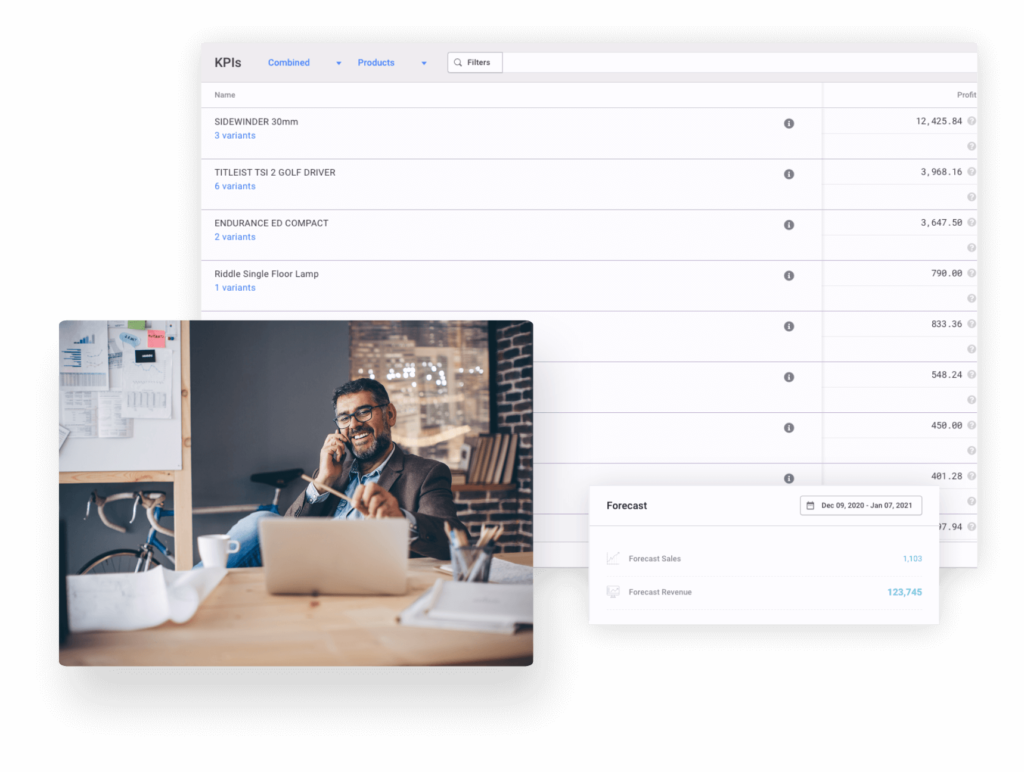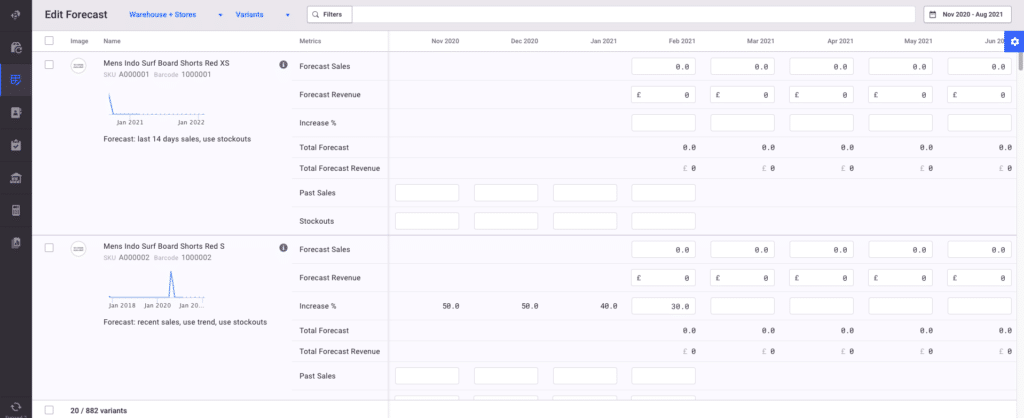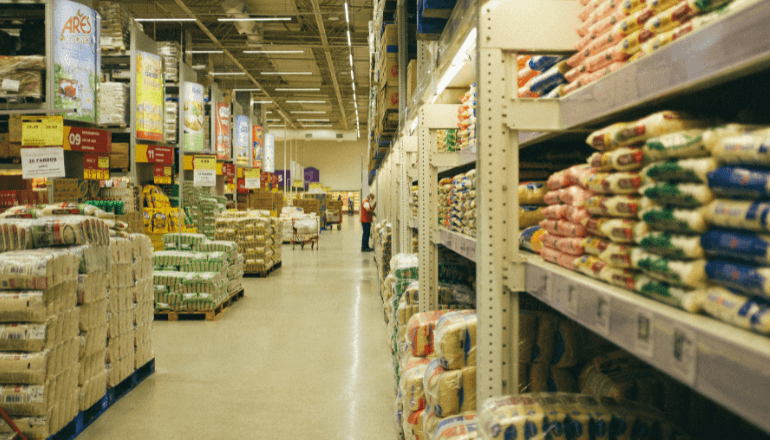Running a retail business is no easy task. No matter what industry you operate in, there are multiple factors to consider in all your decision making, meaning multiple hurdles to cross almost every single day. Making correct decisions is crucial when it comes to your business surviving, growing, and providing good profitability.
Before you even connect with customers, you incur expenses such as inventory costs, salaries, property costs, utility bills, etc. So you are laying out capital before you have even made one cent in income. Getting to that point where your revenue stream starts takes time but, more importantly, it takes careful planning.
You also have to consider the various platforms you will operate on and the different tools that can help you achieve success.
All business decisions rely on the basic economic rule of supply and demand:
“The law of supply and demand is a theory that explains the interaction between the sellers of a resource and the buyers for that resource.”
Every business owner knows this theory, it is the thing that underpins the reason they are in business. They have identified a need for some commodity or service and believe that they can supply it at a price, and/or quality that will appeal to consumers within their targeted demographic group.
But an essential part of that is predicting how much demand for a given product or service there will be, and planning to be able to fulfil that demand. Knowing what the levels of demand may be in a given period can dictate your production levels, how many materials or how much stock you buy, whether you need to increase staffing levels, etc.
Demand forecasting is an area where the best online retail businesses excel. But what exactly is demand planning? How does it work? How accurate is it? We examine the different demand forecasting methods and how they work, so you can make informed decisions as to how demand forecasting can work for you.
What is Demand Forecasting?
As the name suggests, this is, at its most simplest, the ‘art’ (or science) of forecasting what the demand for a particular product will be. It can cover every type of retail or wholesale product, but can also include services. This can cover both private and public sectors, but we shall be focusing particularly on retail businesses.
Demand forecasting is a type of predictive analytics. Predictive analytics uses different data and techniques to make predictions or forecasts about future events. These analytics may cover short, defined periods or may look at the longer term, perhaps encompassing periods of many years. What period of time you study will depend on your business model and needs.
Demand forecasting itself is about predicting the demands of your customer base or market over your chosen period. You may look at historical data relating to your sales in that same time period in previous years, and also take note of seasonal fluctuations such as a rise in demand during particular holiday periods like Christmas or Thanksgiving.
Good demand forecasting provides business owners and managers with vital information that enables them to plan ahead, to meet that forecasted demand and avoid holding excessive products that immobilize cash. It will affect your planning in the areas of purchasing finished goods, marketing and pricing strategies, business growth, market potential, and even staffing levels.
Why is Demand Forecasting Important?
Demand forecasting is a vital component of the planning for retail businesses. Predicting the need for your product or products allows you to plan ahead, whether in months or years. Making the wrong decision may cost your business in either lost revenue (if you have not met the actual demand) or in unnecessary expenses (if you have overestimated needs).
If you consider all the different facets of your business and how you operate, you will quickly see why business forecasting techniques are so necessary:
- Business planning. Does increased demand mean you need to look at scalability? Is there a need for growth or expansion and all that entails? You can also forecast cash flow over these periods and make plans such as when to pay suppliers, etc.
- Budgeting. How much do you need to spend on your finished goods if you are a retailer? What other costs will increasing production or purchasing entail?
- Goal Setting. Every business wants to grow. But there is no point in doubling your output if there is no parallel increase in demand. Goals should be realistic and evidence-based.
- Staffing. If there is an increased demand for your goods, do you need to upscale your staffing levels to meet that demand. A good example of this is when major ecommerce businesses like Amazon hire temporary staff for the Christmas period.
- Inventory. Ensuring you have enough inventory to meet current demand, or planned inventory for future demand, is imperative for any business. Too much inventory and your cash may fall short in other investments. Too little inventory represents loss in potential revenue and may also impact negatively on your brand image.
- Sales pipelines. Knowing how and when your goods get from you to the consumer is an integral part of your business. Knowing if those pipelines need to get tweaked, changed, or reinforced may have a positive effect on your final sales figures.
What are the Types of Demand Forecasting?
As with any type of predictive analysis, there are several different algorithms and models that are used for demand forecasting. It may even be that you employ more than one type or model then take the ‘average’ result from the ones you employ. But it is worth noting that no model will ever be 100% accurate.
There are several types of demand forecasting and l models. Knowing how each works and how it may relate to your organization can give you an informed starting point.
1. Passive demand
This is the simplest and most basic of demand forecasting types. It may be more suitable for smaller businesses due to its simplicity. It is also good for businesses whose primary focus is stability, and who do not have goals for any substantial growth.
Quite simply, this type of forecasting uses your historical sales data. And of course, that historical data should be from the same time period as you are planning for. Depending on your product, you may sell significantly more around Christmas than at other times, so to plan for that period, look at that period in previous years. Planning a good strategy is crucial.
While the simplest of types, passive demand forecasting needs good solid data in order to be effective. This type of forecasting does not need you to employ any statistical methods or to monitor any economic cycles and trends.
2. Active demand
This is another simple type of forecasting, but with a different approach to the passive type. If your business is in any sort of growth phase, then this may suit you more.
Active forecasting is most appropriate if you have less historical data to study. It takes other business factors into account, including any market research you have undertaken, previous and current marketing campaigns (and their results), and also any growth or expansion plans you have in place.
This type of forecasting may also look at some external factors that may affect your plans and potential sales. This could include the economic climate and forecast, how your particular sector is performing and is expected to perform in the future, and whether any components in your supply chain may offer future savings.
3. Short-term
Many businesses only want to look at shorter time periods of up to a year. If your business experiences rapid turnover of products, frequent addition of new products, or fluctuations in demand over the financial year, then this may work for you. This type also allows you to analyze real time data and tweak your projections based on that.
However, while short-term forecasting may offer some benefits, it should be used in conjunction with other types or models.
4. Long-term
Long-term forecasting normally looks at periods from around 12 months up to four or five years. Much of the reason for using this type of forecasting is that it can help with how you plan any growth strategy. Having some idea as to what demand will be in two, three, and four years can help you make decisions as to what rate of growth you encourage.
Long-term forecasting will take into account different data sets, including your historical sales data and also your marketing campaigns and any completed or current market research. It can also help to look at how other companies succeed.
Any planning of this type may also cover several elements of your business planning. It can cover capital investments such as investing in new locations or expanding your current base of operations. It can also cover your future marketing plans and whether you need to look at expanding elements of your supply and logistics chain to achieve the desired results.
5. External macro
Our economy experiences downturns, fluctuations, and cycles, and these can affect your sales and profits. Using external macro forecasting studies these trends and tries to predict how they will affect your business over defined periods of time.
It will try and predict how the economy will perform and can suggest what strategies you need to use in order to meet goals during those time periods. It can allow you to tweak plans and make adjustments to the different parts of your processes such as marketing and production.
External market forces will always have some impact on your business and this is true whether your goals are growth or stability focused. You should also consider that this type of forecasting can also offer insights into other levels of your business model, such as the availability and supply of any products from suppliers.
6. Internal business
Is your organization actually set up to meet any increased demands? Do you have the staffing levels required or the access to the extra stock that may be needed? Internal forecasting helps review your capabilities.
By employing this type of forecasting, you can help identify any areas of your organization that may cause issues when it comes to growth. It can highlight areas such as revenue/capital, actual cash held in accounts, your profit margins, supply and logistics chains, as well as your levels of staff.
If your company has plans for expansion, this can be an excellent tool to use in the planning stage. It can help you plan what areas of your business may need particular work in order to meet the demands that come with growth.
How do I Build a Demand Forecasting Model?
If you are looking to build a forecasting model, it needs to be relevant to both your business type and your needs and plans. There are four primary steps you should take before building or adopting a demand forecasting model:
1. Identify and set goals
If you are going to forecast demand, you should have a very clear idea of why you are doing it. While the main purpose of forecasting is to predict when customers buy and what products they will buy, forecasting that information is about helping you to make strategic decisions within your business.
- Are you looking at one product? A range of products? Or a wider category?
- What time period are you looking at? Year on year? Quarterly? Seasonal?
- What customer groups are you looking at? A specific demographic? Age? Location?
- Will your information provide information for all parties? Investors? Marketing?
2. Data collection
Reliable data lies at the heart of any accurate demand forecast. But choosing what data you use is also important. This will again depend on what you hope to achieve from your forecast.
Pay careful attention to types of forecasting and models to see which one, or combination of, is going to work best for you, then look at what data sets you will use.
- Sales. This can include data from all your channels or from specific ones. You will want to also include times and dates of actual sales, as well as geographical locations.
- Inventory. Include data from your inventory such as SKU (stock-keeping unit) numbers, inventory movement across different locations, etc.
- Returns. Sales do not always tell the whole story. Returns can be costly for a business, especially ecommerce returns. If particular products are seeing high rates of returns, you may want to make changes to that product line.
- External factors. It is not just about what happens within your business and its sales channels. You may also want to look at market conditions and other economic factors.
3. Analysis
Once you have collected your data, you want to employ a process that not only gives you as accurate an overview as possible, but one that you can replicate with future sales forecasts. And as you move forward with future forecasts, it can also help to compare what was forecasted with actual sales for that period.
Being able to compare forecasts is going to be an essential part as you move forwards. It may lead to you changing forecasting models or types, or simply making adjustments to your model. For example, if over three years, your actual sales are around 10% lower every year than what was forecasted, you can factor that difference into your future forecasts.
4. Budgeting
Budgeting is an essential part of how a business operates. But if you are utilizing demand forecasting, then you need to allow for the fact that some financial investment may be made on the back of the results of that forecasting.
Budgeting for changes can allow you to make those changes without significant negative effects. And, as you move forward in a cycle of forecasts, being able to look at forecasts vs reality means that you can identify the areas most in need of extra budget.
6 Demand Forecasting Models
There are several forecasting models that can be applied in different ways. Always remember that you do not need to rely on a single model or method. Use as many as you feel you need.
1. Customer surveys/market research
This model of forecasting is based on data collated from surveys of your customers. While it may be time and effort intensive, it is a good way of collecting data directly from the people who matter the most; your customers. Your surveys can be integrated into your website, ideally at the checkout stage, or you can send them out via email or posts on your social media platforms.
This model can give you information that may not be immediately apparent from just analyzing your historical sales data. And not only will such surveys give you data for forecasting, you can also collect information that helps towards developing marketing campaigns.
2. Expert opinion method
This method is also known as the Delphi method. As the name suggests, it utilizes the opinions of experts to look at what future patterns of sales and demand your company can expect.
How it works is to engage a number of experts over a series of ‘rounds’ until you eventually have a consensus of opinion from them. In round one, you send a survey to all involved experts. You then share the results with the group, and repeat the process for subsequent rounds until they all, hopefully, agree on a forecast. All responses are anonymous.
3. Collective opinion
As this model brings your sales team(s) into play, it is also known as sales force opinion. Your sales teams are normally your direct link to your customers. They have inside knowledge of what your customers want and future consumer behavior. In many cases, they will also have deep insights into what customers think of your product and your service.
Your salespeople can also let you know how your closest competitors are performing, and what sort of strategies they use. Data collection with this method usually entails meetings of your sales team and any relevant managers. These could include marketing managers, HR managers, etc. The group then works together to develop a forecast.
4. Barometric method
The barometric model is one that looks at your past sales and level of demand, in an attempt to predict your future demand. But rather than only analyzing one set of data (that would likely be previous sales figures), the barometric model uses a combination of three different economic indicators to find patterns that may be replicated as you move forward.
What indicators you use may change depending on external factors, and all three need detailed and accurate analysis in order to create your forecast:
- Leading indicators. Leading indicators are values that will likely change over time. Examples of these can include changing values of inventories, net profits, etc.
- Coincidental indicators. These move up, or down, usually in tandem with overall economic activities. Examples of this can include things like the unemployment rate or the GNP (gross national product) at constant prices.
- Lagging indicators. As the name may suggest, these are factors that follow other changes, but after some delay. Examples of this could include your labor cost per unit, interest rates on short term loans, etc.
5. Statistical method
Statistical methods of demand forecasting are perhaps the most used, the most reliable, and most important of the models we look at here. There are two major types of statistical method;
- Trend method. This works best when the business has a larger amount of historical sales data that has been collected over a number of years. By analyzing this data chronologically, you can see if there are any cycles over given periods.
- Regression method. Slightly more complicated, this econometric model analyzes relationships between dependent and independent variables. For example, within retail or ecommerce, the dependent variable would be the quantity of goods demanded. Independent variables would include prices of your products, income, etc.
The regression equation is represented below. There are online regression calculators or you can outsource this type of analysis to specialist firms.
Y = a + bX.
6. Market experiment method
This model collects a range of information that relates to both current and future demand for your products or services. It looks at how customers behave in real market conditions in order to estimate how they will behave in the future. The customers studied may often be segmented into different groups such as age, income, locations, etc.
The experiments will look at changes and fluctuations in prices, and at the related spending levels of consumers in the market. The changes in demand can then be highlighted and recorded and used to help forecast future demand for specific products.
What are the Challenges of Demand Forecasting?
Demand forecasting is vital in achieving the utmost profitability and productivity. It does, however, throw up some challenges of which it’s important to be aware.
1. Using the wrong model
It doesn’t matter how good your data is, if you apply a method that does not suit your area of the market, then the results could be worthless in predicting demand. Examine all the options available, read carefully on how they work and what they can do for you, or even speak to experts in this field who can advise you.
2. Seasonal fluctuations
While looking at annual data or longer periods may give you a ‘big’ picture of year on year trends, it does not allow for any fluctuations due to seasonality within a 12-month period. If you carry products that are seasonal in nature, then you need to consider smaller time snapshots that focus on seasonal demands for products.
3. Lack of data
If you go rushing into demand forecasting with a lack of complete data sets, then the likelihood is that your results will also be incomplete and will lack accuracy. Accurate data is essential to accurate forecasting. Ensure that any data, such as sales or inventory, has been recorded and tracked in real time so that the model you use can give a better forecast.
4. Multichannel/omnichannel challenges
Very few of today’s organizations only operate via one channel. For many companies, and particularly in ecommerce, multiple channels are the norm to reach consumers. It is therefore crucial that you do not just forecast total demand, but do it on a channel by channel basis. This will give you a far more accurate overview.
5. Unexpected events
No matter how accurate your forecasting model is, an unexpected event can throw a real spanner in the works. The COVID pandemic is a perfect example of something you simply cannot plan for. It has disrupted manufacturing, supply chains, logistics chains, and much more. But you can have some contingency planning in place to cover some events.
How Demand Forecasting Helps You Grow Your Ecommerce Business
With sales happening over multiple channels and platforms, predicting what will sell when, where, and how is an integral part when it comes to planning production, purchasing, inventory, and marketing. Especially in the ecommerce sector.
Four good examples why you need demand forecasting in your ecommerce business:
- Lowers financial risk: good forecasting enables you to budget better, tied to any changes in customer demand.
- Identifies need. Knowing what products your customers want enables you to better plan inventory to meet those wants, and encourage customer loyalty and retention.
- Better inventory management. Getting your inventory right is difficult, but carrying enough to satisfy demand is crucial. There is little point in having high inventory of a seasonal product when that season is months away.
- Pricing. Your pricing strategy should reflect demand for each product, and forecasting can help with this. A product with little demand may be discounted, a product in high demand may be priced higher.
What is demand forecasting in the supply chain?
Good management of your supply chain relies heavily on good demand forecasting. Your SCMS (supply chain management system) needs to be aware of multiple factors that can have cumulative effects on your bottom line.
For example, if you have high volume of inventory sitting in your warehouse, then your costs will run high, especially if specialist services such as cold storage are involved.
Maintaining as lean an inventory level as possible lowers costs, while still having enough of any one good to satisfy demand. But demand forecasting in your supply chain is not only about inventory, it also covers other factors such as staffing, distribution, and scheduling.
5 considerations and tips for ecommerce demand forecasting
- Always pay attention to different trends over the year and any specific seasonal fluctuations. Knowing what goods sell when and in what quantities will help you plan better for the next year.
- History. Always look at any historical trends with your sales figures. Accurate data is a great foundation when it comes to future plans for your ecommerce business. If you do not have a great deal of historical data, tools like Google Trends may be of use.
- Watch your competitors. There is a lot of information in the public domain regarding sales figures. This may be useful when your ecommerce business is launching something new. Your competitors’ figures may help you see what demand there is for your product.
- Time constraints. Any sort of planning has to consider different time factors. If a customer orders something from you, is it immediately available? Do you have to order from suppliers? How long does it take to deliver? Always include these factors in any forecast and plan.
- Integration. If you are operating an omnichannel model, even a good forecast may go wrong if you are working with different inventory management systems. Consider an integrated system to work better with any forecast.
The Takeaway: Demand Forecasting is Essential to Ecommerce Growth and Success
Unlike many more traditional business models, the focus of nearly every ecommerce organization is growth. That growth may be gradual or rapid, but either route will depend heavily on efficient planning. And in turn, that efficient planning is going to depend heavily on using an accurate demand forecasting model.
Having a good forecast of how your market will perform in the future and what levels of demand there will be for your products helps on several levels. It allows for good inventory management and planning, good management of your cash flow, and it also helps with creating informed marketing strategies and planning for any necessary additions to your workforce.
Many ecommerce businesses carry a diverse range of products. And in many cases, they sell through different channels where demand may fluctuate over the course of a year. Recognizing the differences in both channel demand and seasonal demand comes from good demand forecasting. Get it right, and you will see your business flourish and grow.









